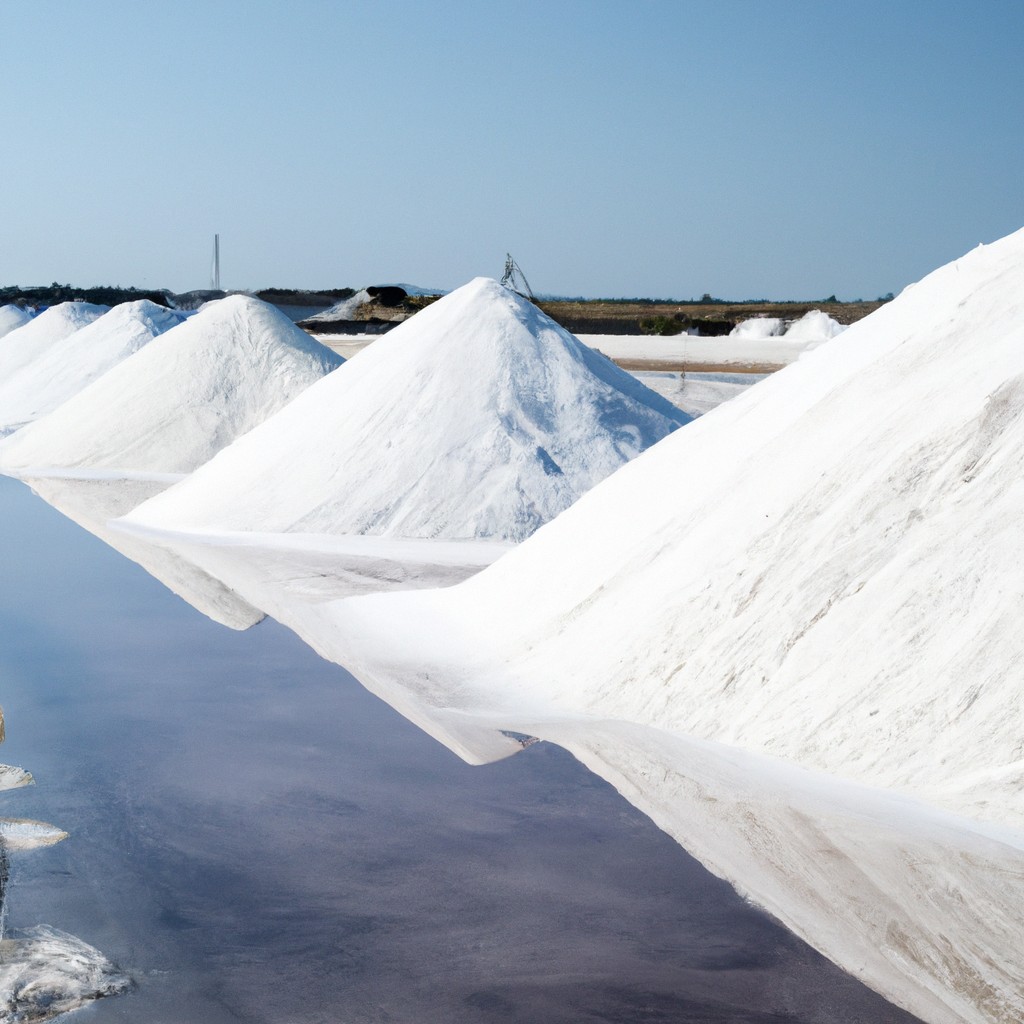This article explains what solar salt is and how it functions in various applications.
Key takeaways:
- Solar salt is produced by harnessing the power of the sun and wind to evaporate seawater.
- The process of solar salt production involves evaporation, crystallization, and refinement.
- Solar salt is used for water softening, de-icing, chlorine production, and solar power storage.
- The cost-effectiveness and energy efficiency of solar salt make it a popular choice.
- Challenges such as land requirements and salt purity variations are considered, but the benefits outweigh the drawbacks.
What Is Solar Salt?

Solar salt, also known as sea salt, is produced through the evaporation of seawater. Unlike table salt, which is mined from salt deposits in the earth and heavily processed to achieve a fine texture, solar salt retains a more natural state. The process harnesses the power of the sun and wind to evaporate water, leaving behind salt crystals. This method is environmentally friendly as it uses natural resources and does not rely on energy-consuming machinery. Solar salt is often praised for containing trace minerals and elements that are removed from regular table salt during processing. These characteristics make it a preferred choice for culinary uses and various industrial applications.
How Does Solar Salt Work?
Solar salt production relies on the natural process of evaporation to separate salt from seawater. Here’s how it works:
- Seawater is directed into large, shallow ponds.
- The sun and wind naturally evaporate the water, leaving behind concentrated brine.
- As the brine’s salinity increases, salt begins to crystallize and precipitate out of the solution.
- Once the water has evaporated sufficiently, what remains are large salt crystals ready for harvesting.
- These salt crystals are then collected, washed, and refined to produce clean, usable solar salt.
This simple yet effective method harnesses the renewable energy of the sun, making it an eco-friendly option for salt production.
Applications of Solar Salt
Solar salt is not just for seasoning food; it plays a significant role in a variety of industries. First and foremost, it is essential in water softening processes. Many homes and businesses use it to remove minerals from hard water, which prolongs the life of plumbing systems and improves water quality.
In colder climates, solar salt is a trusted agent for de-icing roads and walkways. Its ability to lower the freezing point of water makes it effective in preventing ice formation, enhancing safety during winter.
This versatile salt also finds importance in the production of chlorine and caustic soda through the electrolysis of brine. These chemicals are crucial for manufacturing paper, soap, and several other products.
Furthermore, it’s a key component in solar power storage systems. Concentrated solar power plants use molten salt mixtures to store solar energy as heat, which can be converted to electricity even after the sun sets, ensuring consistent power supply.
These applications highlight the adaptability and utility of solar salt across various fields, making it an integral material in modern industry.
Pros & Cons of Solar Salt
Solar salt offers several advantages starting with its cost-effectiveness due to lower production expenses compared to mined salt. It is also highly efficient in storing solar energy, making it a sustainable ally for concentrated solar power plants.
However, a few downsides should be considered. The process can require vast land areas, which might conflict with local ecosystem preservation and other land uses. Additionally, the purity of solar salt can vary which may affect energy efficiency in certain applications.
Despite these challenges, solar salt remains a favored choice for energy storage and industrial uses, especially where renewable resources are prioritized. The balance of benefits over drawbacks generally tilts favorably, especially as technology in harvesting and application continues to advance.
Also Read:
- Concentrated Solar Power: Benefits, Technology, and Impact
- Solar Energy Is Renewable or Nonrenewable: Clarifying the Facts and Misunderstandings
- Bifacial Solar Panels: Benefits, Installation Tips, and Cost Analysis
- Passive vs Active Solar Energy: Understanding the Differences and Benefits
- Solar Cell Technology: Understanding How It Powers Our Future